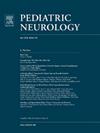Patterns of Use and Benefit of Triptans in the Treatment of Acute Headache Worsening in Youth With Post-Traumatic Headache
IF 3.2
3区 医学
Q2 CLINICAL NEUROLOGY
引用次数: 0
Abstract
Background
Triptans are used to treat migraine attacks, but little to no evidence supports their use for youth with post-traumatic headache (PTH). This study evaluated patterns of use and benefit of triptans in the treatment of acute headache worsening in youth with PTH.
Methods
A single-center retrospective cohort study was conducted by reviewing charts for 332 patients aged eight to 17 years seen in a child neurology clinic for PTH within one year of concussion. Treatment responses and side effects were recorded. Demographic and headache characteristics associated with triptan use and treatment response were examined.
Results
Eighty of 332 patients (24.1%) used a triptan. Of those, 34 (42.5%) had acute (less than three months) PTH and 46 (57.5%) had persistent (greater than or equal to three months) PTH. Median time from injury to triptan prescription was 123 days (interquartile range, 50, 242). Older patients, those with headache phenotype consistent with migraine, those who previously used a greater number of treatments for acute headache worsening, and those seen by the headache program were more likely to use triptans (χ2 > 7.00, P < 0.01). Sixty percent reported at least partial headache relief with their first triptan, whereas 25% reported side effects, all of which were minor.
Conclusions
These findings show triptans are more likely to be used for youth with PTH with phenotype consistent with migraine that are unrelieved by other treatments for acute headache worsening. Triptans may be an effective treatment for acute headache worsening in youth with PTH, although randomized controlled trials are needed.
创伤后头痛青少年在治疗急性头痛恶化时使用曲坦类药物的模式和益处
曲坦类药物用于治疗偏头痛发作,但几乎没有证据支持其用于青少年创伤后头痛(PTH)。本研究评估了曲坦类药物在治疗青少年甲状旁腺激素急性头痛恶化中的使用模式和益处。方法采用单中心回顾性队列研究方法,对某儿童神经病学门诊就诊的332例8 ~ 17岁的PTH患者进行回顾性分析。记录治疗效果和副作用。研究了与曲坦类药物使用和治疗反应相关的人口统计学和头痛特征。结果332例患者中有80例(24.1%)使用曲坦类药物。其中34例(42.5%)为急性(少于3个月)甲状旁腺激素,46例(57.5%)为持续性(大于或等于3个月)甲状旁腺激素。从受伤到曲坦类药物处方的中位时间为123天(四分位数差50,242)。老年患者、头痛表型与偏头痛一致的患者、先前使用过较多急性头痛加重治疗方法的患者以及头痛项目观察到的患者更有可能使用曲坦类药物(χ2 >;7.00, P <;0.01)。60%的人报告说,第一次服用曲坦类药物至少部分缓解了头痛,而25%的人报告了副作用,所有这些副作用都很轻微。结论这些发现表明曲坦类药物更可能用于与偏头痛表型一致的PTH青年患者,其他治疗方法无法缓解急性头痛恶化。曲坦类药物可能是治疗青少年甲状旁腺激素急性头痛恶化的有效方法,尽管还需要随机对照试验。
本文章由计算机程序翻译,如有差异,请以英文原文为准。
求助全文
约1分钟内获得全文
求助全文
来源期刊

Pediatric neurology
医学-临床神经学
CiteScore
4.80
自引率
2.60%
发文量
176
审稿时长
78 days
期刊介绍:
Pediatric Neurology publishes timely peer-reviewed clinical and research articles covering all aspects of the developing nervous system.
Pediatric Neurology features up-to-the-minute publication of the latest advances in the diagnosis, management, and treatment of pediatric neurologic disorders. The journal''s editor, E. Steve Roach, in conjunction with the team of Associate Editors, heads an internationally recognized editorial board, ensuring the most authoritative and extensive coverage of the field. Among the topics covered are: epilepsy, mitochondrial diseases, congenital malformations, chromosomopathies, peripheral neuropathies, perinatal and childhood stroke, cerebral palsy, as well as other diseases affecting the developing nervous system.
 求助内容:
求助内容: 应助结果提醒方式:
应助结果提醒方式:


